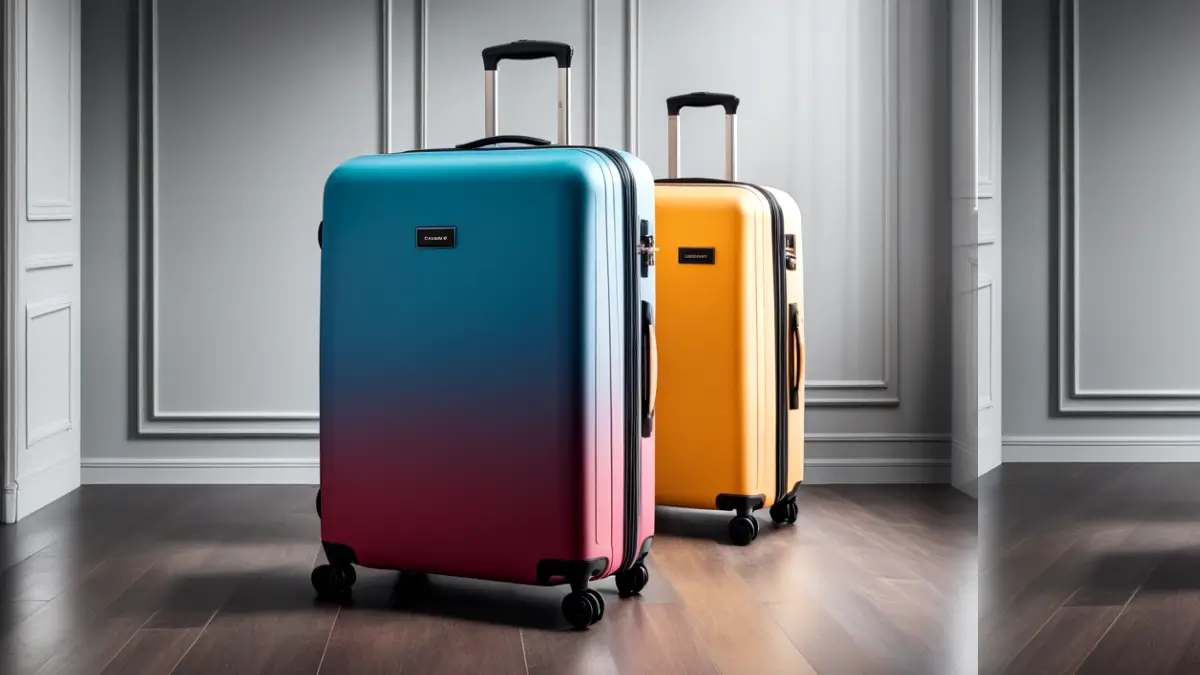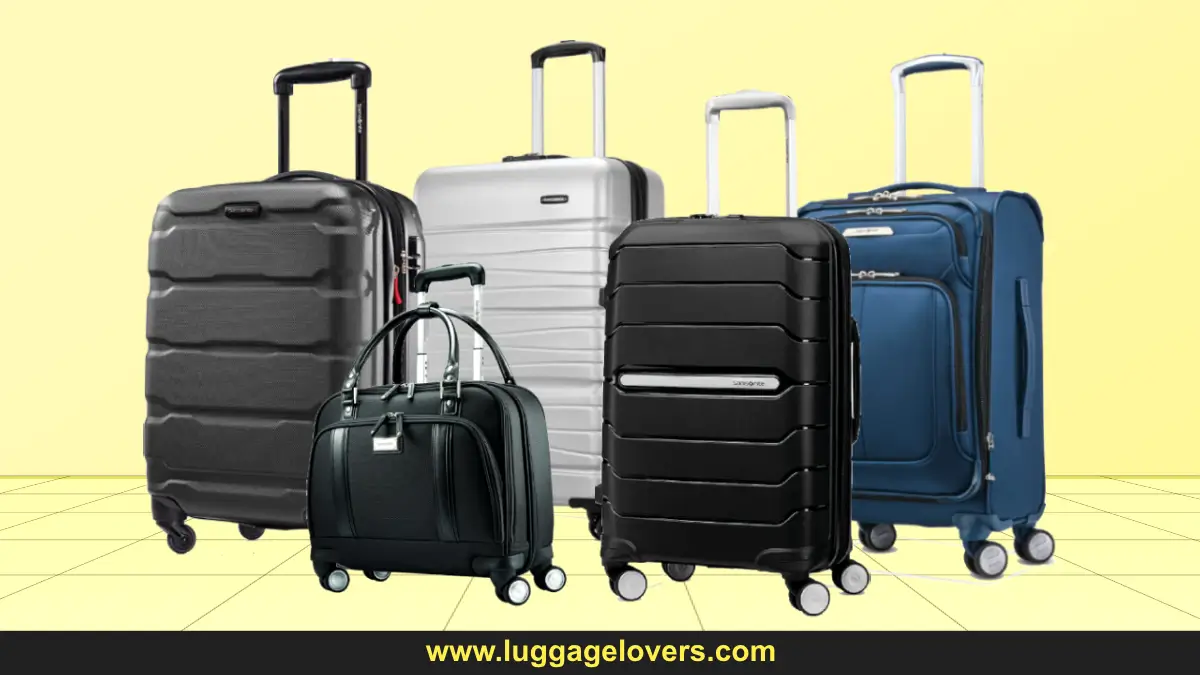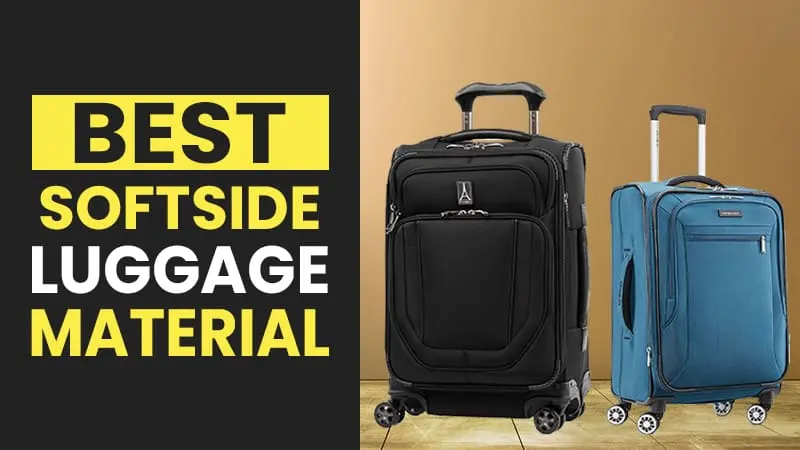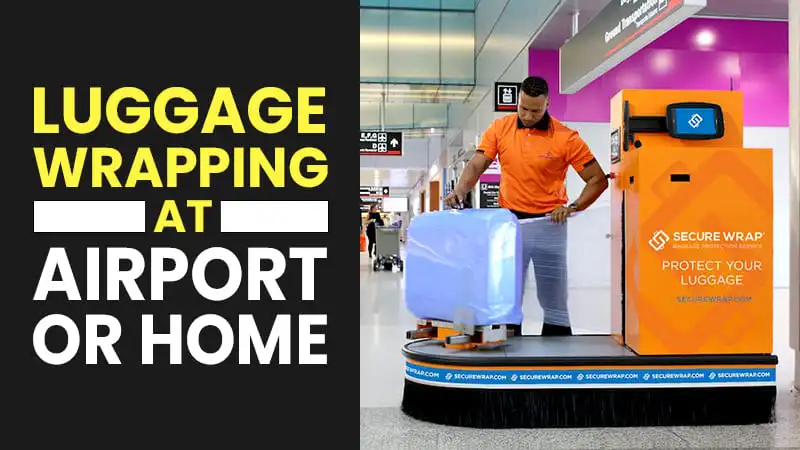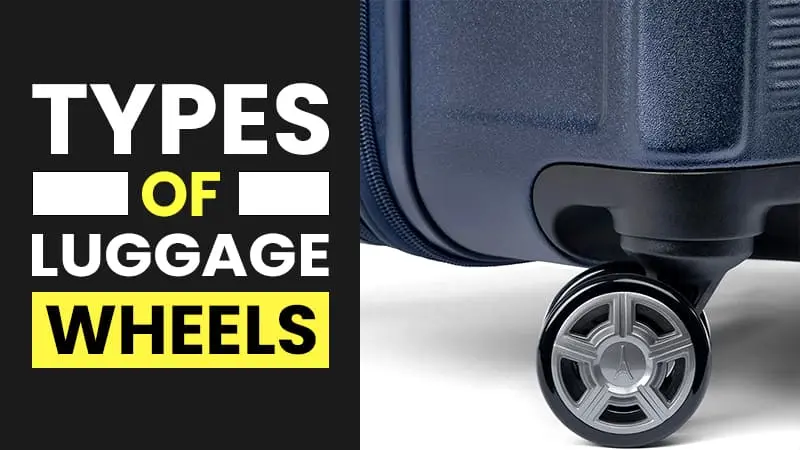7 Important Things to Consider When Buying Luggage for Traveling
One of the most frequent questions that I’m asked is what to consider when buying luggage. This is an important concern because having proper knowledge of choosing the right luggage can make all the difference for your travel.
There are various crucial factors that you must take into consideration when buying luggage. These factors include durability, functionality, storage and organization, and most importantly, the size and weight of luggage.
Apart from these checkpoints, people miss some other points, like the luggage color, design, warranty, and terms and conditions. The importance of luggage color and design is always underestimated by people.
In this guide, we’ll cover important things to consider when buying luggage, by the end of this guide, you’ll be able to make an informed decision and choose the perfect luggage on your own so let’s dive into the details.
Table of Contents
7 Things to Consider When Buying Luggage
1. Durability
Whether you choose to travel with hardside luggage or softside luggage, durability must always be at the top of your mind. Both types of suitcases come with different benefits and drawbacks, but what is more important is what material you choose for your luggage.
How to Measure the Strength of Hard Shell Luggage
If we categorize hard shell luggage into two main categories, one would be plastic luggage and the other aluminum luggage. If we further categorize plastic luggage, there are mainly four types of plastic suitcases: ABS, polycarbonate, polypropylene, and ABS and PC composite.
Aluminum Hard Shell Luggage
Talking about aluminum suitcases, these are the most durable of all types of hard shell suitcases but they have their own benefits and drawbacks. With aluminum luggage, there are mainly two concerns: one is its weight and the other is its price.
Most trusted aluminum luggage brands like Rimova, Tumi, and Away ensure that they use lightweight aluminum, but still, compared to any other hard shell luggage, aluminum suitcases are approximately one and a half times heavier, which might cause problems at the airport and you might be asked for oversized luggage.
Another drawback of aluminum suitcases is that they are way more expensive than other suitcases available on the market, especially if you go with any reputed brand. If you don’t have any weight or budget issues, you can choose aluminum, but we’d recommend you go with reputable brands like Rimova, Away, or Tumi.
Also read: Is Aluminum Luggage Worth the Investment?
Other Types of Hard Shell Luggage
There are mainly four types of material, as we mentioned above. Among them, polycarbonate suitcases are the most reliable and trusted because of their ultimate strength and flexibility. That is why this type of luggage is the most popular among travelers.
They’re quite affordable and lightweight compared to aluminum suitcases. They’re highly impact- and weather-resistant, so you don’t have to worry about your luggage and belongings getting wet in rainy weather.
After polycarbonate, ABS suitcases are the most popular not because of their durability but because of their affordability. These suitcases are quite good in terms of exterior quality but compared to other types of suitcases, ABS suitcases are the least durable ones.
But ABS suitcases are generally not as flexible as polycarbonate and polypropylene but they’re lighter than PC. So if you’re someone who prefers to be lightweight and travel occasionally without breaking the bank, ABS luggage is the way to go but if you’re someone who travels frequently or more than two times a year, polycarbonate is surely the best choice for you.
There are many other materials, like polypropylene and ABS + PC composite, but the most popular among all the materials are ABS, polycarbonate, and aluminum. If you want to know more in detail, we’d recommend checking out this guide on the best hard shell luggage materials.
2. Size and Weight
Size and Weight are the most important concerns that sometimes people miss. Avoiding the airlines’ guidelines about luggage size and weight can cause potential problems, and you might be forced to pay a hefty amount as compensation.
Size and Dimensions: Why to Consider?
Different airlines have different size restrictions for personal items, carry-ons, and checked luggage. Some airlines play loose but some are strict with their guidelines. You might be wondering what the safest side is for both carry-on and checked luggage. Don’t worry; we’ve covered you.
Personal Item Allowed Size
Almost every airline allows each passenger to bring one personal item and one carry-on bag, but a few airlines allow only personal items with their basic ticket, like in the case of JetBlue blue basic ticket, which allows a passenger to bring only one personal item and not carry-on luggage.
But what’s more important is its permissible dimensions, The most common personal item allowed size is 18 × 14 × 8 inches, which is 45 × 35 × 29 cm. If your personal item exceed this limit, it’ll be considered carry-on luggage.
Carry-on luggage Allowed Size
Talking about carry-on, airlines usually measure carry-ons in two different ways: one by measuring each side of luggage, and the other by linear inches. But the linear inches method is less popular for measuring carry-ons.
However, the most popular and safest guidelines most airlines follow to measure carry-on luggage is 22 × 14 × 9 inches, which is 56 × 36 × 23 cm. So make sure that your carry-on luggage falls within this guideline.
If your carry-on luggage exceeds this limit, you’ll either be asked for additional oversized luggage charges or to check it in.
Checked luggage Allowed Size
Talking about checked luggage, the most common rule that almost every airline follows is the 62-inch rule. The 62 linear inches rule basically means that the sum of the length, width, and depth of your luggage should be less than or equal to 62 inches.
Generally, large checked luggage is marketed as 62 linear inches luggage but in reality, it’s bigger and doesn’t meet airline guidelines. So don’t trust anyone, measure it on your own to avoid any surprises at airports.
If you want to know more in detail, check out this extensive guide on 62 linear inches luggage rule by airlines.
Weight: How Important Is It to Measure?
Unknowingly or unconsciously, people end up overpacking their luggage and crossing the 50-pound limit. That’s why they are asked to pay hefty amounts for oversized luggage. So make sure the luggage is lightweight at the time of purchase.
Suitcases are often marked as lightweight but in reality, they’re not. Manufacturers sometimes manipulate customers; make sure to weigh it on your own. A carry-on bag should not weigh more than 8 lbs.
Talking about checked luggage, airlines are more concerned about implementing the 62-linear-inch rule than focusing on the weight of luggage.
3. Security Feature and Handle
Features are something that makes our journey smooth and peaceful. Of all the features, TSA-approved lock holds a special place. A TSA-approved lock not only allows you to lock your luggage but it also helps TSA agents or officers inspect luggage without breaking the lock or luggage.
Once you lock your luggage, no one can access it except you and the TSA. Generally, checked suitcases always come with a TSA lock but sometimes manufacturers don’t offer a TSA lock on carry-on, so make sure to have it even on your carry-on if you’re very concerned about security.
Another thing that you must take into account is that you must always ensure that the handle of the suitcase is not too floppy. It must be sturdy enough to handle the weight of your luggage and help it maneuver easily. Make sure that the handle is adjustable and made of sturdy material.
Also read: Guide to TSA-Approved Lock: Everything You Need to Know
4. Organization and Compartments
When choosing luggage, consider the storage and compartments not just for organization but also for maximum functionality. The basic or essential thing that you must consider is the divider. There must be at least one divider for separation and to hold items in place.
The compartment must also be equipped with elastic straps. Additionally, if you’re purchasing a branded or premium luggage, you can also expect a laundry bag to keep your wet and dry clothes separate.
Besides all these things, look to see if there are enough small and large pockets for better organization or not. If there is not, you can use packing cubes, they allow you to separate your belongings for different purposes and also help to spot them quickly and easily.
Another useful consideration is the inclusion of hidden pockets for holding valuables like passports, wallets, or electronics.
5. Warranty and Brand Reputation
Warranty, especially its terms and conditions, is also one of the most ignored factors. Unfocusing on the warranty can cost you a lot in the long run.
There are mainly two types of warranties: one that covers only manufacturing defects and the other that is unconditional and covers everything, no matter how the luggage is damaged. Usually, budget luggage brands offer a limited warranty and that is for a few years.
But if you go with a reputable luggage brand, they mostly offer an unconditional, at least ten-year or lifetime warranty.
Another factor that most people don’t consider at the time of purchase is the shipping cost. Sometimes you have to pay shipping costs for both sides and sometimes for one. But there are some brands that cover shipping on their own for both sides.
So make sure to read the terms and conditions carefully to avoid any mess in the future. My recommendation is to choose a brand that offers at least a 10-year or lifetime warranty. It’s much better if it’s unconditional.
That’s the reason why we recommend Travelpro, Samsonite, and Delsey for quality luggage; if you want to go with aluminum luggage, go with Away, Tumi, or Rimova. Their warranties are exceptional and reliable.
6. Color and Design
Last but not least, the color and design of luggage are also two of the main factors that most people don’t take into consideration. You might be wondering why the colors and design of luggage matter, You might have heard of the news of suitcases getting stolen from airports; this is most probably because of the matching colors.
The most stolen color at the airport is black, followed by navy blue and gray. That is why we recommend choosing luggage that is less popular at airports and can easily be identified at the baggage carousel.
The least popular colors are red, pink, bright blue, bright green, and any other color that you can quickly spot from a distance. It’ll not only protect your luggage from theft but also keep you safe from hassle.
If you want to know more, here is a detailed guide on how important the unique color and design of luggage are.
7. Price and Value
No matter what your budget is, you can get a piece of luggage for $50 to $1600, but what is more important is to get the most out of your specific budget. ABS luggage is the cheapest option on the market, while polycarbonate luggage is somewhat expensive but still affordable considering the quality, and aluminum luggage is the most expensive luggage option.
I recommend you choose polycarbonate luggage, you can easily get carry-on luggage for around $150, while a set of it is around $300. Which is in my opinion a great deal as they last for years. If you prefer to save some money and want to go with ABS luggage, you can save a little but in the long run, it’s cost you more.
So if you’re not able to stretch your budget, then we’d recommend you get it; otherwise, investing in polycarbonate luggage makes more sense.

